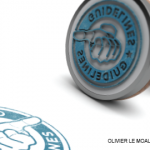NEW YORK (Reuters Health)—Advice is considered an effective treatment for acute low back pain (LBP), but neither clinical trials nor guidelines include adequate detail on what this advice should be, or how doctors should deliver it, according to a new review.
And half of the advice topics included in guidelines were discordant with evidence from clinical trials, Dr. Matthew Stevens of the University of Sydney in Australia and colleagues found.
“The results of our study question the usefulness of current guidelines for providing clinicians with evidence-based information on advice interventions for patients with acute LBP,” they write in The Spine Journal, online July 13.1
All international guidelines mention advice as a treatment for LBP, Dr. Stevens and his team note in their report. But although advice interventions assessed in clinical trials may include instruction on exercises, tips on daily activities and education on anatomy, they add, many guidelines don’t mention these advice topics. Guidelines may mention the content of recommendations, but rarely provide guidance on how the advice should be delivered and in what form.
The researchers used the Template for Intervention Description and Replication (TIDieR) checklist to assess concordance between the LBP advice that guidelines recommend and the advice evaluated in clinical trials. Their analysis included 26 articles reporting on 21 different randomized clinical trials (RCTs), which included 29 separate advice interventions, as well as 16 guidelines.
They identified 12 topics, divided into four categories: advice about LBP mechanisms and course; advice on physical activity; advice on self-management; and advice on medical management.
Advice to stay active was the topic tested most often in RCTs (included in 45%), followed by recommendations for specific exercise (31%). All of the guidelines recommended that patients should remain active or have a graded return to activity.
Seventy-nine percent recommended explaining that LBM is benign and has a good prognosis, while 64% advised against bed rest and 64% advised that patients return to work as soon as possible
Regimens tested in RCTs most commonly consisted of a single advice session, but ranged from a posted booklet to sessions performed on every workday for nine months.
The researchers categorized concordance results for advice topics as underplayed, balanced or overstated. If the proportion of guidelines that recommended an advice topic was within 25% of the proportion of trials that found a treatment effect for an intervention including that topic, the results were considered balanced. If the guideline proportion was below the proportion of trials finding a treatment effect, results were underplayed, and they were considered overplayed if the guideline proportion was higher than the trial proportion.
Guidelines overplayed support for telling patients LBP is benign with a good prognosis, telling patients to stay active, and telling patients to get back to work early. They underplayed support for advice on self-management of LBP, including strategies for managing and coping with pain, managing stress, and avoiding or minimizing pain with posture, ergonomics and sparing strategies.
On average, the guidelines were about eight years old, which could help explain the lack of concordance with the evidence, the authors note. “There may also be a bias towards simpler, more easily implemented components as guidelines overstated simple messages … and underplayed more involved self-management strategies,” they add.
The results show, they conclude, “that the potential clinical value of advice interventions for patients with acute LBP are probably not being realized.”
Dr. Stevens was not available for an interview by press time.
Reference
- Stevens ML, Lin CC, de Carvalho FA, et al. Advice for acute low back pain: A comparison of what research supports and what guidelines recommend. Spine J. 2017 Jul 13. pii: S1529-9430(17)30328-5. doi: 10.1016/j.spinee.2017.05.030. [Epub ahead of print]


